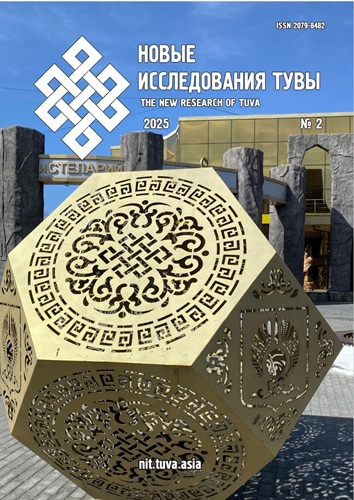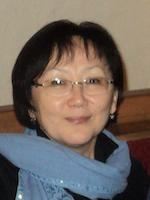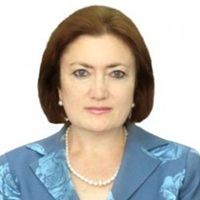The ethnocultural meaning of the artifacts of the Karachay-Balkarian wedding: the processes of desemantization and increment
DOI:
https://doi.org/10.25178/nit.2025.2.20Keywords:
wedding ritual; cultural artifact; ethnocultural meaning; desemantization; Karachay-Balkar cultureAbstract
The article examines an aspect of the study of Karachay-Balkar wedding rituals — namely, the desemantization and the accretion of ethnocultural meanings in artifacts directly or indirectly related to wedding ceremonies. The empirical material was collected through a sampling method of object and phenomenon names drawn from documentary, lexicographic, ethnographic, and folkloric sources. It includes nominations of two types of artifacts: “pre-wedding” and wedding related.
The embedded ethnocultural meanings of “pre-wedding” artifacts serve to realize various functions, including value-orientational, regulatory, and axiological, as well as intergenerational transmission. These artifacts can be classified into those that remain relevant and function within the contemporary life of the ethnic group, and those that are no longer relevant preserved within the linguistic system as historicisms and archaisms that have since been replaced.
In the past, various items were considered essential to matchmaking rituals. While not directly related to the wedding ceremony itself, their accompanying function was rooted in the non-verbal information they conveyed — information that had to be “read” and interpreted appropriately by the matchmakers. A number of these artifacts vividly illustrate the process of desemantization of ethnocultural meaning, as they are no longer decoded in the same way as before.
References
Alikaev, R. S., Bashieva, S. K. (2013) Gender norm in the context of the wedding ceremony (linguocognitive aspect). Vestnik Pyatigorskogo gosudarstvennogo lingvisticheskogo universiteta, no. 1, pp. 154–157. (In Russ.)
Alikaev, R. S., Bashieva, S. K. (2019) Features of the nomination of linguocultural information in the wedding worldview of the Karachays. Aktualnye problemy filologii i pedagogicheskoi lingvistiki, no. 4, pp. 64–69. (In Russ.)
Appoev, A. K. (2011) Lexical-semantic groups of ethnographic terminology in the Karachay-Balkar language. Vestnik Chelyabinskogo gosudarstvennogo universiteta, no. 13(228), pp. 26–30. (In Russ.)
Begeulov, R. M., Zelnitskaya, R. Sh. (2018) Transformation of modern wedding rituals among the Karachays. Vestnik Adygeiskogo gosudarstvennogo universiteta, issue 1 (214), pp. 15–27. (In Russ.)
Bolurova, A. N. (2007) Wedding rite among the Karachays in the 19th — early 20th centuries. Izvestiya vysshikh uchebnykh zavedenii Severo-Kavkazskii region. Obshchestvennye nauki, special issue, pp. 38–47. (In Russ.)
Galimova, N. V. (2022) Graphic symbolism of family tamga-signs of Kabardians and Balkars. Herald of Humanitarian Education, issue 2(26), pp. 155–161. (In Russ.)
Deveeva, A. A., Dodueva, A. T. (2016) Representation of wedding ritual vocabulary in the Karachay-Balkar language. Vestnik Chelyabinskogo gosudarstvennogo pedagogicheskogo universiteta, no. 8, pp. 137–141 (In Russ.)
Deveeva, A. A. (2017) Linguistic explication of the main stages of a Karachay-Balkar wedding. Filologicheskie nauki Voprosy teorii i praktiki, no. 7(73), part 3, pp. 101–103. (In Russ.)
Dzhurtubaev, M. Ch. (2011) Mythology and epic of the Karachay-Balkar people: Ancient beliefs of Balkars and Karachays. Karachay-Balkar heroic epic. Nalchik, Elbrus. 488 p. (In Russ.)
Dichkovskaya, E. A. (2018) Desemantization as a basic concept of cultural processes evolution. Vesti Instituta sovremennykh znanii, no. 3(76), pp. 85–90. (In Russ.)
Dodueva, A. T., Zhaboeva, A. A. and Deveeva A. A. (2017) Locative components of wedding ritual vocabulary in the Karachay-Balkar language. Mezhdunarodnyi nauchnyi zhurnal Innovatsionnaya nauka, vol. 3, no. 4, pp. 166–168. (In Russ.)
Kudaev, M. Ch. (1988) Karachay-Balkar wedding ceremony. Nalchik, Elbrus. 124 p. (In Russ.)
Kudaev, M. Ch. (2003) Karachay-Balkar ethnochoreography and symbolism. Nalchik, Elbrus. 108 p. (In Russ.)
Kudaev, M. Ch. (2011) Old Karachay-Balkar wedding. Nalchik, Kniga. 200 p. (In Russ.)
Kudaev, M. Ch. (2012) Cultural heritage of Balkars and Karachays. Nalchik, Kniga. 279 p. (In Russ.)
Kuchmezova, M. Ch. (2003) Socionormative culture of the Balkars: traditions and modernity. Nalchik, EL’-FA. 210 p. (In Russ.)
Lamazhaa, Ch. K. (2021) Essays on modern Tuvan culture. St. Petersburg, Nestor-Istoriya. 192 p. (In Russ.)
Lotman, Yu. M. (1996) Inside thinking worlds: Man — Text — Semiosphere — History. Moscow, Yazyki russkoi kultury. 464 p. (In Russ.)
Mikhailova, E. L. (2010) On cultural contexts undergoing desemantization and the fate of psychological practices. Moskovskii psikhoterapevticheskii zhurnal Konsultativnaya psikhologiya i psikhoterapiya, no. 1(64), pp. 103–120. (In Russ.)
Neshchimenko, G. P. (1994) Language and culture in the history of an ethnos. In: Language —culture — ethnicity / ed. by G. P. Neshchimenko. Moscow, Nauka. 242 p. Pp. 78–98 (In Russ.)
Sarbashieva, A. M. (2014) Traditional wedding rituals and Balkar dramatic creativity. Vestnik Dageskogo nauchnogo tsentra, no. 54, pp. 118–121. (In Russ.)
Semenov, K. B. (2006) Methods of restraint in traditions and customs of the Karachay people. Vestnik Adygeiskogo gosudarstvennogo universiteta, no. 1, pp. 148–152 (In Russ.)
Sokolova, A. D. (2022) “Rejected death”: desemantization of death and the new understanding of man in the early USSR. Vestnik arkheologii antropologii i etnografii, no. 1(56), pp. 235–243 (In Russ.)
Tuvans : Native people (2022) / eds. by Ch. K. Lamazhaa and N. D. Suvandii. St. Petersburg, Nestor-Istoriya. 360 p. (In Russ.)
Khatuev, R. T. (2012) Karachay-Balkar symbolism: Experience of ethnic semiotics. Cherkessk, IKO “Alanskii Ermitazh”. 89 p. (In Russ.)
Shamanov, I. M. (1979) Marriage and wedding rituals of the Karachays in the 19th — early 20th century. In: Arkheologiya i etnografiya Karachaevo-Cherkesii / ed. by Ya. A. Fedorov. Cherkessk, Karachaevo-Cherkesskii nauchno-issledovatelskii institut ekonomiki istorii yazyka i literatury. 192 p. Pp. 78–111. (In Russ.)
Shaimerdinova, N. G. (2019) “Kirgizsko-russkii slovar” (1897): Cultural and linguistic explications. Turkic Studies Journal, no. 1, issue 1, pp. 73–86. (In Russ.). DOI: https://doi.org/10.32523/tsj.01-2019/5-5
Shcherbinin, A. I. and Shcherbinina, N. G. (2019) Desemantization of sacramental constructs “Lenin” and “Motherland”. Vestnik Tomskogo gosudarstvennogo universiteta. Filosofiya Sotsiologiya Politologiya, no. 47, pp. 200–215 (In Russ.)
Epstein, M. (1985) Realogy — the science of things. Dekorativnoe iskusstvo SSSR, no. 6, pp. 1–22. (In Russ.).
Published
How to Cite
For citation:
Bakhtikireeva U. M. and Bashieva S. K. The ethnocultural meaning of the artifacts of the Karachay-Balkarian wedding: the processes of desemantization and increment. New Research of Tuva, 2025, no. 2, pp. 339-353. (In Russ.). DOI: https://doi.org/10.25178/nit.2025.2.20
Issue
Section

This work is licensed under a Creative Commons Attribution-NonCommercial 4.0 International License.

Author(s) license holder(s) grant rights for their work to the journal (grantee of a license) under the simple non-exclusive open license in accordance with Art. 1286.1 «Open license for a research work, work of literature or fine arts», Civil Code of the Russian Federation.
New Research of Tuva publishes articles under the Creative Commons Attribution-NonCommercial license (CC BY-NC).
Since it is an open license, author(s) reserve the right to upload the article to their institutional repository, submit it to another journal (if it allows republications), or republish it on their own website (in full, or in part).
However, several conditions apply here:
a) The republished version must always contain the name(s) and affiliation(s) of the author(s), the original title and the hyperlink to the original version on the New Research of Tuva website;
b) It must be in open access, free of charge, and no category of readers must be in any way whatsoever advantaged over general readership.
c) should the contribution be submitted elsewhere by its author(s) without substantial modification (30% or more of original text unchanged), the body of the article should contain a disclaimer that the original version was published in New Research of Tuva (with a link to the respective page)
The CC-BY-NC is a non-revocable license which applies worldwide and lasts for the duration of the work’s copyright.










